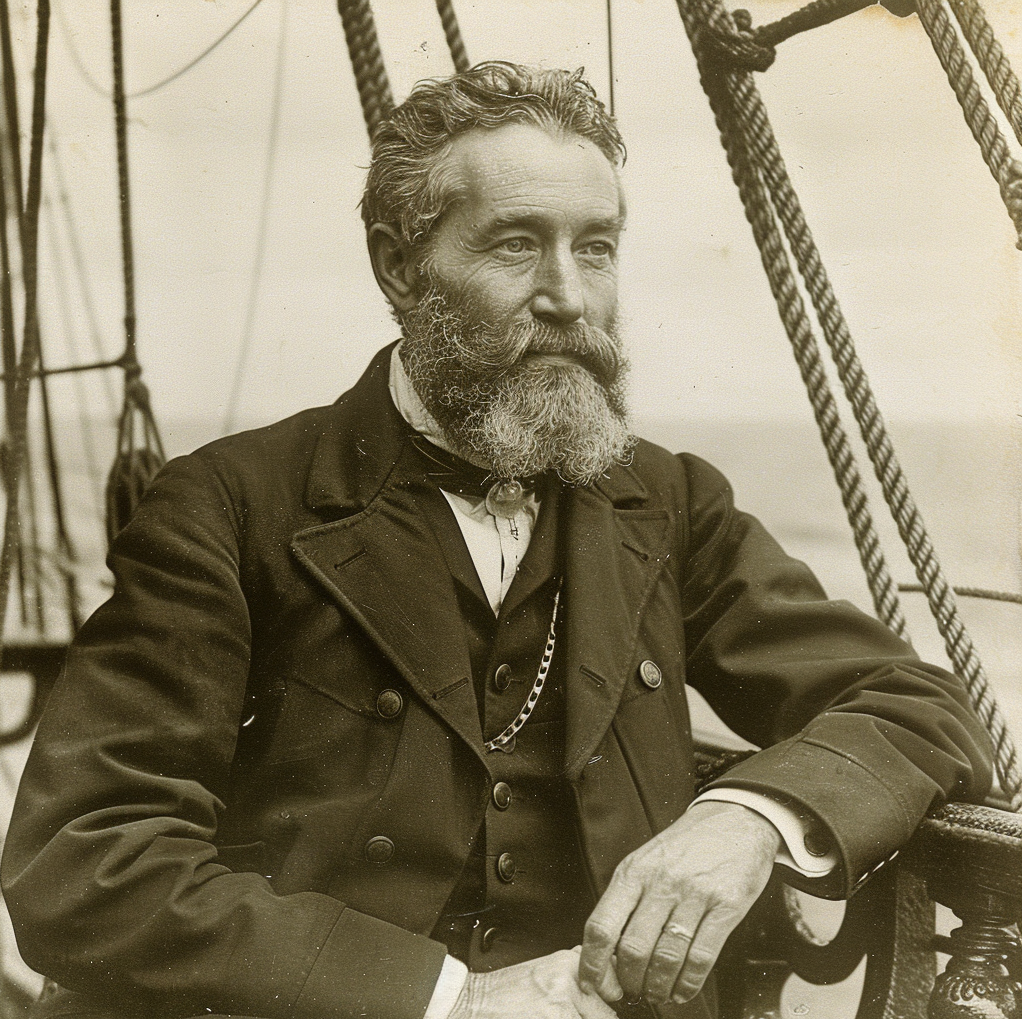The Man Who Wired the Atlantic

Some entrepreneurs find it hard to stop entrepreneuring… Entrepreneuring isn’t really a word but it seems appropriate here. If it was a word, Entrepreneuring would be the act of being an entrepreneur… and it would apply to Cyrus Field.
Cyrus Field was born in Stockbridge, Massachusetts in 1819. The eighth of ten children, he moved in New York city at the age of 15 and took a job as an errand boy at a rate of $50 per year. He was so good that the next year his salary doubled, and then doubled again the next. After three years he was homesick, so returned to Stockbridge where he got married and went to work with his brother in the paper manufacturing business. The next year he set up his own paper manufacturing company and simultaneously became a partner in a paper wholesaler in New York.
Unfortunately, the paper manufacturer, E. Root & Co. went bankrupt six months later. Field bought up the remains of the company, negotiated with creditors and continued supplying paper to clients. Field was so good at selling that the new company emerged from bankruptcy and he paid all of the cancelled debts of E. Root & Co in full and with interest despite having no obligation to do so.
Field was an extraordinary salesman, retiring at 33 in 1853 with a nest egg of $250,000, or $10 million in today’s dollars. He would build a home in the upscale Gramercy Park neighborhood of Manhattan, but he didn’t plan on spending the next 60 years on the golf course or smoking cigars at some club. Instead he took a trip to South and Central America with some friends, including the extraordinary landscape painter Fredrick Church.
Upon returning home the entrepreneurial bug bit Field again. He was introduced to the idea of telegraph wires. His brother introduced him to a gentleman looking to run an underwater line between Newfoundland and Nova Scotia. Field was hooked and jumped in with both feet. He set his eyes even farther, looking to run an additional line from Newfoundland to Ireland to drastically shorten communication between the America and Europe.
Field and a coterie of investors, engineers and entrepreneurs created a group to plan and raise capital to achieve that unprecedented feat. The group formed the American Telegraph Company and they were off! In 1857, after having traveled to London and secured financing from the British, Field secured funding from the United States government as well.
That year, after the Newfoundland and Nova Scotia segment was laid, the first attempt at laying the transatlantic line was made. It failed, breaking 200 miles from shore. The next June a monster storm destroyed the cable and almost sank the ship carrying the cable. In July they tried again and in August the first transatlantic cable was sent, a Morse code sent from Queen Victoria to American President James Buchanan.
The joy was extraordinary as the telegraph would save more than two weeks on communications from Europe to the United States. The joy, however, was short lived. After three weeks the cable would break, ending what looked to be a great success. It would sadly be another eight years before the cable was replaced for good. That eight years would be a series of fits and starts, small victories and failures and of course a whirlwind of delays due to the American Civil War.
After the success crossing the Atlantic Field would turn his entrepreneurial attention elsewhere. In the 1870s and 1880s his primary focus would be on transportation, in the form of the New York Elevated Railway Company, which was the aboveground version of New York’s subway before there really was a subway. He would also invest with Jay Gould in the Wabash Railroad, which would serve the Midwest. As if that wasn’t enough to keep him busy, Field would also invest $20,000 in the Atlanta Constitution while owning another newspaper in New York, the Mail and Express.
In 1887 Field and Gould would break and the financer would force Field from his railway. Field would further lose most of his money in the stock market and would move back to Stockbridge for the remaining years of his life.
Cyrus Field died in 1892 after a life that took him across the Atlantic Ocean countless times, saw him explore South and Central America with America’s greatest landscape painter and which included spectacular rises and falls in both business and personal fortunes. His most important legacy is the tenacity he showed in finally connecting Europe to the United States in terms of information. Today, with Facetime and Wi-Fi calling and phones at our hip, it’s good to remember that there was a time when it took weeks or months for information to get across the country, nevermind an ocean, and serial entrepreneur Cyrus Field played a pivotal role in shaving that communication gap down to seconds.
Further Reading:
https://www.thoughtco.com/cyrus-field-1773794
